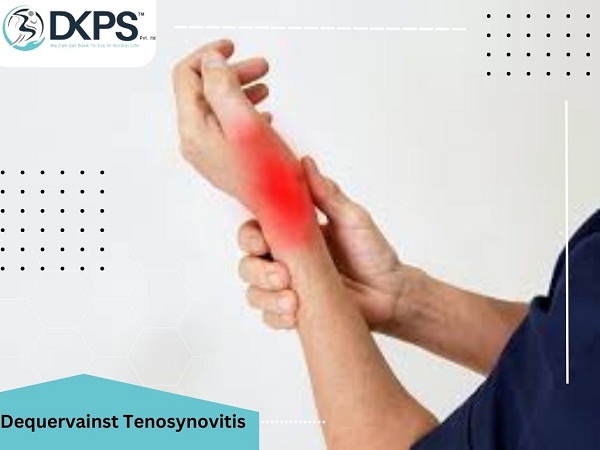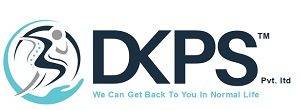- Home
- About Us
- DKPS Dealing
- BLOG
- Delhi NCR
- Delhi
- Physiotherapy at Home Near Me | Physiotherapist in South Delhi
- Best Chiropractor in Delhi
- Physiotherapist in Delhi
- Cupping Therapy in Delhi
- Home Nursing Services in Delhi
- Needle Therapy for Back Pain
- Sports Injury Physiotherapy
- Best Physiotherapist Visit at Home in Rohini Sector 24
- Physiotherapy at Home In Rohini Sector 9 |
- Physiotherapist in Pitampura | Physiotherapy at Home in Pitampura
- Physiotherapy at home in Rohini sector 29
- Physiotherapist in Paschim Vihar
- Physio home visit | Home Visit Physiotherapy |
- Physiotherapist in Saket | Best Physiotherapist in Saket |
- Physiotherapist In Janakpuri | Best Physiotherapist in Janakpuri |
- Best Physiotherapist in Punjabi Bagh | Punjabi Bagh Physiotherapist |
- Best Physiotherapist Service at Home in Dwarka, Delhi
- Best Physiotherapist in Chandigarh at Home Visit
- Faridabad
- Gurugram
- Noida
- Best Physiotherapy Gorakhpur
- Best Physiotherapist in Lucknow | Physiotherapist in Lucknow near me |
- Delhi
- Mumbai
- Delhi NCR
- Department
- Doctors
- Gallery
- Packages
- Contact Us
- Home
- About Us
- DKPS Dealing
- BLOG
- Delhi NCR
- Delhi
- Physiotherapy at Home Near Me | Physiotherapist in South Delhi
- Best Chiropractor in Delhi
- Physiotherapist in Delhi
- Cupping Therapy in Delhi
- Home Nursing Services in Delhi
- Needle Therapy for Back Pain
- Sports Injury Physiotherapy
- Best Physiotherapist Visit at Home in Rohini Sector 24
- Physiotherapy at Home In Rohini Sector 9 |
- Physiotherapist in Pitampura | Physiotherapy at Home in Pitampura
- Physiotherapy at home in Rohini sector 29
- Physiotherapist in Paschim Vihar
- Physio home visit | Home Visit Physiotherapy |
- Physiotherapist in Saket | Best Physiotherapist in Saket |
- Physiotherapist In Janakpuri | Best Physiotherapist in Janakpuri |
- Best Physiotherapist in Punjabi Bagh | Punjabi Bagh Physiotherapist |
- Best Physiotherapist Service at Home in Dwarka, Delhi
- Best Physiotherapist in Chandigarh at Home Visit
- Faridabad
- Gurugram
- Noida
- Best Physiotherapy Gorakhpur
- Best Physiotherapist in Lucknow | Physiotherapist in Lucknow near me |
- Delhi
- Mumbai
- Delhi NCR
- Department
- Doctors
- Gallery
- Packages
- Contact Us
De Quervains tenosynovitis
- Home
- De Quervains tenosynovitis

De Quervain's tenosynovitis
De Quervain’s tenosynovitis is a common condition that affects the tendons in the wrist and thumb area. It is a painful condition that can affect people of all ages and genders, and it can be caused by various factors, including overuse, injury, or inflammation.
In this article, we will discuss the symptoms, causes, diagnosis, and treatment of De Quervain’s tenosynovitis.
Symptoms
De Quervain’s tenosynovitis is characterized by pain and tenderness on the thumb side of the wrist. The pain may be felt in the wrist or thumb, and it may worsen with certain activities such as grasping, pinching, or twisting. Some patients may also experience swelling, stiffness, or a popping sensation when they move their thumb.
CAUSES
De Quervain’s tenosynovitis is caused by inflammation of the tendons that control the movement of the thumb. These tendons run through a narrow tunnel, called the extensor retinaculum, on the side of the wrist. When the tendons become inflamed, the tunnel can become inflexible, causing the tendons to rub against each other and become irritated.
There are several factors that can contribute to the development of De Quervain’s tenosynovitis, including:
Overuse: Repeatedly performing the same motions with the wrist and thumb can strain the tendons and lead to inflammation. This is common in people who use their hands for manual labor, such as construction workers, mechanics, and gardeners.
Injury: A direct blow to the wrist or thumb can cause damage to the tendons and lead to inflammation.
Inflammatory conditions: Certain inflammatory conditions, such as rheumatoid arthritis or lupus, can cause inflammation in the tendons.
Pregnancy: Pregnant women are at an increased risk of developing De Quervain’s tenosynovitis due to hormonal changes that can cause inflammation.
Diagnosis
Diagnosing De Quervain’s tenosynovitis typically involves a physical exam and a review of the patient’s medical history. The doctor may ask the patient to perform certain hand and wrist movements to assess their range of motion and identify areas of pain and tenderness.
In some cases, imaging tests, such as an X-ray or MRI, may be ordered to rule out other conditions or to confirm the diagnosis.
TREATMENT
Treatment
The treatment of De Quervain’s tenosynovitis depends on the severity of the condition and the underlying cause. In mild cases, the condition may improve with rest, ice, and over-the-counter pain medication.
For more severe cases, the following treatments may be recommended:
Immobilization: Wearing a splint or brace on the wrist and thumb can help to immobilize the affected area and reduce inflammation.
Physical therapy: Stretching and strengthening exercises can help to improve the range of motion and reduce pain and stiffness.
Corticosteroid injections: Injecting a corticosteroid medication into the affected area can help to reduce inflammation and relieve pain.
Surgery: In rare cases, surgery may be recommended to release the constricted tendons and relieve pressure on the nerves.
Prevention
Preventing De Quervain’s tenosynovitis involves avoiding repetitive hand and wrist movements, taking frequent breaks during activities requiring hand use, and using proper ergonomic techniques when performing manual labor.
Conclusion
De Quervain’s tenosynovitis is a painful condition that can affect people of all ages and genders. It is caused by inflammation of the tendons that control the movement of the thumb and wrist and can be triggered by a variety of factors, including overuse, injury, or inflammatory conditions. The symptoms of De Quervain’s tenosynovitis include pain, tenderness, swelling, stiffness, and a popping sensation when moving the thumb.
Diagnosing De Quervain’s tenosynovitis involves a physical exam and a review of the patient’s medical history. Treatment options for the condition depend on the severity of the case and may include rest, ice, over-the-counter pain medication, immobilization, physical therapy, corticosteroid injections, or surgery.
Preventing De Quervain’s tenosynovitis involves taking measures to avoid repetitive hand and wrist movements, taking frequent breaks during activities requiring hand use, and using proper ergonomic techniques when performing manual labor.
It is important to seek medical attention if you are experiencing symptoms of De Quervain’s tenosynovitis, as early intervention can help to prevent the condition from worsening and improve your chances of a full recovery. With the right treatment and preventive measures, many people with De Quervain’s tenosynovitis are able to manage their symptoms and resume their normal activities.
How physiotherapy help in De Quervain’s tenosynovitis
Physiotherapy can be a useful treatment option for patients with De Quervain’s tenosynovitis. The goals of physiotherapy for this condition are to reduce pain and inflammation, improve range of motion and strength, and prevent recurrence of symptoms.
Here are some ways in which physiotherapy can help with De Quervain’s tenosynovitis:
Manual Therapy
: Manual therapy is a hands-on treatment technique that can help to relieve pain and stiffness in the affected area. Your physiotherapist may use massage, soft tissue mobilization, or joint mobilization techniques to help reduce inflammation and improve joint mobility.
Stretching and Strengthening Exercises:
Specific stretching and strengthening exercises can be prescribed by your physiotherapist to improve the range of motion and strength of the affected area. These exercises can help to reduce pain and prevent the recurrence of symptoms.
Modalities
: Your physiotherapist may use modalities such as ice, heat, or ultrasound therapy to help reduce inflammation and pain in the affected area.
Ergonomic Training:
Your physiotherapist can provide guidance on proper ergonomics and body mechanics to help prevent further strain on the affected area.
Activity Modification
: Your physiotherapist can advise you on how to modify your daily activities to avoid aggravating the affected area. They may also suggest alternative exercises or activities that are less likely to cause symptoms.
Taping: Your physiotherapist may use taping techniques to help support the affected area and reduce strain on the tendons.
Overall, physiotherapy can be an effective treatment option for De Quervain’s tenosynovitis. It can help to reduce pain, inflammation, and stiffness, while also improving range of motion and strength. Your physiotherapist can work with you to develop a personalized treatment plan that is tailored to your specific needs and goals.
How Drsinghphysiocare Can Help You:-
Drsinghphysiocare.com has very experienced physiotherapists well-versed in modern manual techniques and rehabilitation protocols. Moving patients from one place to another is complicated and can even increase the damage. Drsinghphysiocare.com offers physiotherapists home visits to rehabilitate patients in the comfort of their homes. Regular home physiotherapy by our physiotherapist helps patients actively and vigorously return to independence.
Senior physicians select our talented and experienced physiotherapists after they meet our strict recruitment standards. As a result of our higher standards and quality of service, many patients have recovered from the comfort of their homes and saved their valuable time and money.
For More Article-
Physiotherapy/ Chiropractor/Cupping therapy/Dry Needling therapy services available in –
Check Professionals details at location wise
NOIDA SECTOR 44
NOIDA SECTOR 47,NOIDA SECTOR55 NOIDA SECTOR 56,NOIDA SECTOR15,NOIDA SECTOR 75,NOIDA SECTOR 76,NOIDA SECTOR 150,NOIDA SECTOR 39,NOIDA SECTOR 137,NOIDA SECTOR 22,NOIDA SECTOR 18, NOIDA SECTOR 144
NOIDA SECTOR 19,NOIDA SECTOR 27
NOIDA SECTOR 50,NOIDA SECTOR 34,
NOIDA SECTOR 110,NOIDA SECTOR 104,NOIDA
SECTOR 27
GREATER NOIDA ALPHA 1
GREATER NOIDA ALHA 2
GREATER NOIDA BETA 1
GREATER NOIDA BETA 2
GREATER NOIDA SECTOR 1
